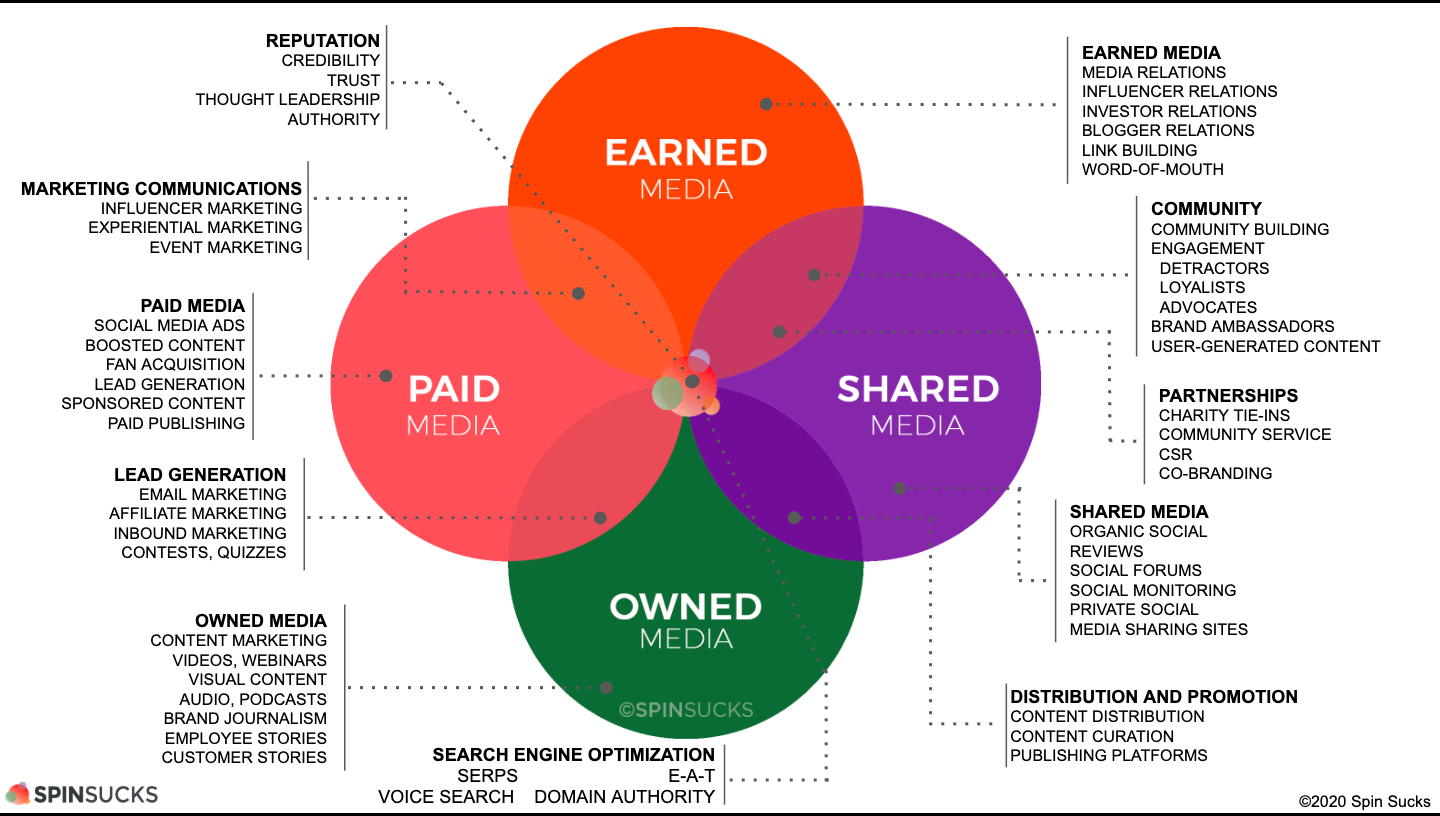
It’s been a long time since I’ve gotten fired up and stood on my soapbox to discuss something.
But the time has come.
I am stepping up there to have a conversation about The Problem with PESO, an article written by Adam Sanders of Strategic Objectives.
The best part of the article is he is discusses the merits and faults of the PESO model, an integrated communications tool we created when Spin Sucks (the book) was published.
I love communicators who tangle with traditional methods and work to find new ways to do things.
I love to see what other communicators think of the PESO model—how it works in practice, what they love, what they hate, and what they would change.
And I always comment on those articles to start a dialogue so we can continue to better the industry and work toward the vision of changing the perception people have of us.
What Adam wrote—including that I’m venerable—is valuable.
To a certain extent.
But I did not comment on his article because so much of his analysis of the PESO model is wrong.
The “Challenges” with the PESO Model
Had I left a comment, it would have been a blog post, so I am publishing it here, instead.
Here is exactly what the articles says are the challenges with the PESO model:
- The term “PESO” either prioritizes paid channels or treats all channels equally. This may seem like semantics but, as someone who believes that what matters isn’t just what we say but how we say it, the fact that paid comes first problematic. Because if a strategy puts paid channels first, PR probably isn’t fated to play a leading role.
- PESO isn’t ownable by PR. Advertisers and digital agencies can leverage the exact same model. It doesn’t provide a competitive advantage that will compel brand managers to invest more of their finite budgets in PR.
- PESO isn’t a PR model, it’s an integrated communications model. Yes, they are different. It fails to highlight the unique strengths of PR, including deeper storytelling and third-party authority. While certainly pushing the industry in the right direction (away from a media relations-focused paradigm), PESO may actually make the role of PR more tenuous in the long-term.
To his credit, he suggests a different acronym—(A)ESOP—after the famed storyteller, which I really like and wish I’d thought of that instead of the Mexican currency.
It’d certainly be more fun to use that to tell the model’s story.
Alas.
The History of the PESO Model
When we launched the PESO model in 2014, it was with the idea that communicators do more than media relations.
And to educate business leaders on what communicators do—along with the kinds of things we do to generate business results.
In today’s digital world, the PESO model does all of those things…and more.
There is almost nothing that makes me more crazy than business leaders who want to hire a PR firm solely for publicity.
And it makes me more crazy when communicators only do media relations, and speak to PR in that silo.
Both of those things hurt our industry, don’t allow for evolution, and stick us in a tactical corner.
Those things also speak to the issues with the article’s line of thinking.
Solutions to the PESO Model Challenges
Let me address each:
- The term “PESO” either prioritizes paid channels or treats all channels equally. Paid media is first only because it allowed for an acronym that was easy to remember. If I were to place them in order of preference, it would be OESP. And no one would remember that. The first rule of branding is create something people remember.
- PESO isn’t ownable by PR. I don’t agree that advertisers and digital agencies can leverage the PESO model. Yes, they can absolutely do paid and shared media, but communicators are trained to build relationships, earn media and influencer commentary, and write with value. Advertisers and digital agencies are trained differently so their earned and owned media (should they attempt it) comes across differently. For example, there certainly is a place for demand generation copy, which digital agencies do very well, but it doesn’t fit with the PESO model we’ve created for communicators.
- PESO isn’t a PR model, it’s an integrated communications model. YES! Exactly! We are storytellers, but we have to do it through more than our relationships with journalists and influencers. We are not one-trick ponies. What we do is more than one tactic. We are strategic thinkers who can change the face of an organization with the work we do. We absolutely should be focused on an integrated communications model. Anything less is selling all of us—and the entire industry—short.
The PESO model definitely is my baby and I defend it with the same vigor as a mother hen.
But I’m also willing to accept it’s not perfect and it needs to evolve, given the right analysis of challenges that allow us to present new solutions.
If these challenges advanced the PR industry, I would definitely invite the discourse.
But I don’t agree that an integrated communications framework makes the PR industry tenuous (not to mention the other two challenges).
This does, however, leave the door open for you to have your say.
Do you agree or disagree with the challenges described, and the solutions presented?
To gain an even better understanding of how PESO works, watch our FREE masterclass. You’ll learn more about how to implement the PESO model to achieve unparalleled communications results.